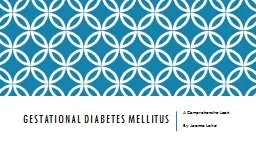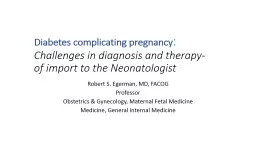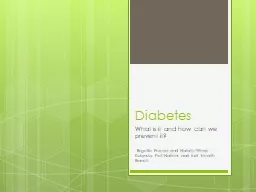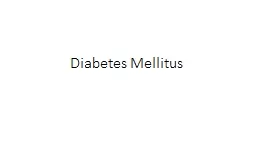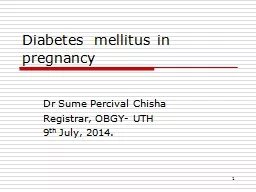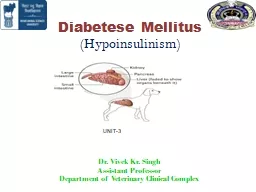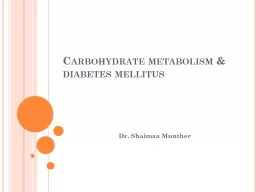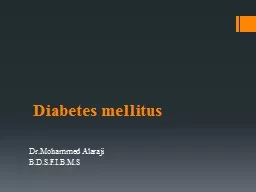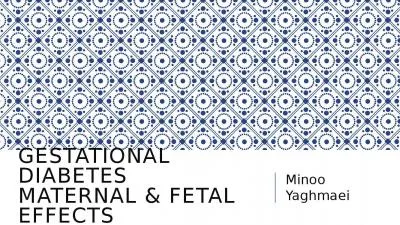PPT-Gestational Diabetes Mellitus
Author : ellena-manuel | Published Date : 2017-03-18
GDM Training Madhya Pradesh 12 April 2016 Presentation title Date 1 Dr Sachin Chittawar DM Endocrinology Diabetes a public health crisis Diabetes and maternal
Presentation Embed Code
Download Presentation
Download Presentation The PPT/PDF document "Gestational Diabetes Mellitus" is the property of its rightful owner. Permission is granted to download and print the materials on this website for personal, non-commercial use only, and to display it on your personal computer provided you do not modify the materials and that you retain all copyright notices contained in the materials. By downloading content from our website, you accept the terms of this agreement.
Gestational Diabetes Mellitus: Transcript
Download Rules Of Document
"Gestational Diabetes Mellitus"The content belongs to its owner. You may download and print it for personal use, without modification, and keep all copyright notices. By downloading, you agree to these terms.
Related Documents




